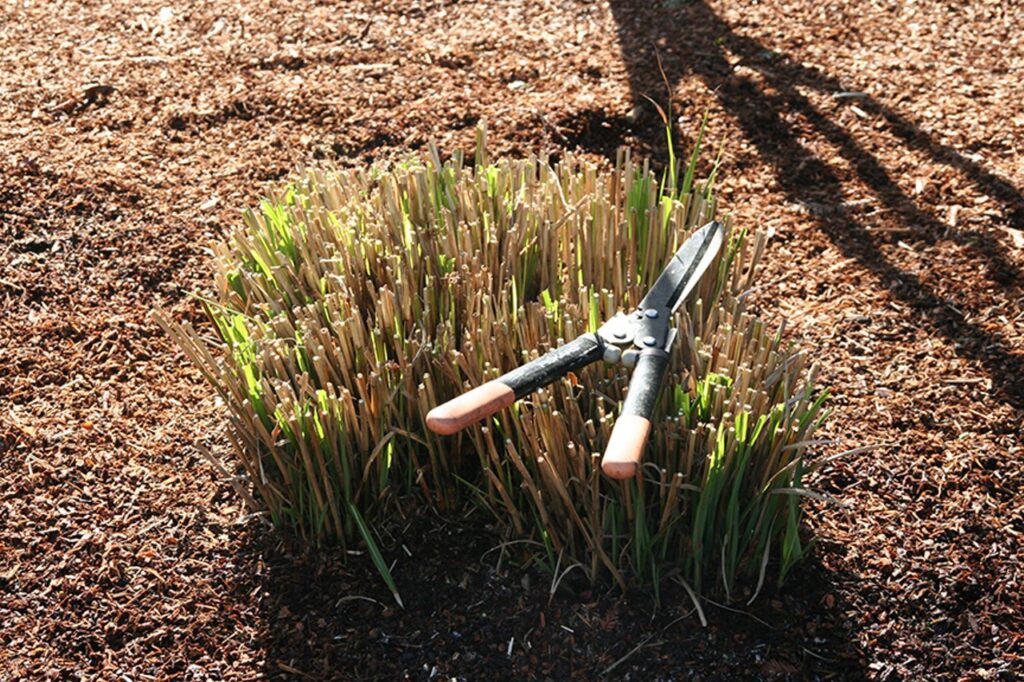Spring is the time to get your flowerbeds ready for the growing season. This means that you have a few tasks to add to your “To do” list.

First Pass
For me, the first pass is to get the bulk of the dead material out. This includes shearing back ornamental grasses, hand clearing coreopsis and coneflowers, and raking out the ferns. Other plants like daylily and iris need some hand work to remove the spent leaves while being careful with the crown or rhizomes. Mums and asters usually can be snapped off by hand, but I’m careful not to tug on the plant because the wet spring soil can allow the plant to be lifted. You get the idea on these perennials. Most of this step is done by hand with a good pair of gloves or with my Fiskars shears. I’ve tried cheap gloves, expensive gloves and several in between, and truly, I wear them all out. Last year I bought these gloves and they lasted all year! I’d rate them a “Good Buy” for that reason and the price is right.
Although I try to pull annuals in the fall, some years that just doesn’t happen. This spring, I have a handful of small areas with annuals to pull, but that’s the only downside to having them bloom so late into the fall last year. These plants will hopefully come out with their roots and a little soil mix can be put back in its place.
Now is also the time to trim summer or fall interest bushes and think about thinning plants that have crept past their intended place. At our home, that means trimming and pulling suckers on the Virginia Sweetspire bushes. That’s my love-hate plant. But, this year, a couple may get pulled completely (that’s another story). The perennial geranium and huechera (coral bell) need to be thinned and potted up to root. There may be a couple of iris to reduce also.
It’s all in the details
Now, it’s time to really tidy up the beds! This means getting all the scrubby stubs and stems cut or removed to below the new plant growth. This step makes a huge difference in the appearance of each individual plant, but when you step back and take a look, the entire bed looks to much better. Like getting a fresh haircut and realizing that it was overdue. Use clean, sharp pruners, loppers, shears, or garden scissors.
Re-position any mulch that has moved, or been moved by critters, during winter weather. Consider cutting a fresh edge on your beds if they have contact with the lawn. This is an easier task while the ground is soft and wet.
Finally, run a blower and a rake through the areas to tidy up leftover leaves, stems and other debris. Now is the perfect time to top your beds with your favorite mulch, too! While there are small plants or very few plants, you can get the mulch installed faster than waiting until plants are full and tall. Sweep or blow off the sidewalk, path, driveway or other hard surface around your beds and you’re ready for the plants to take off for the season!